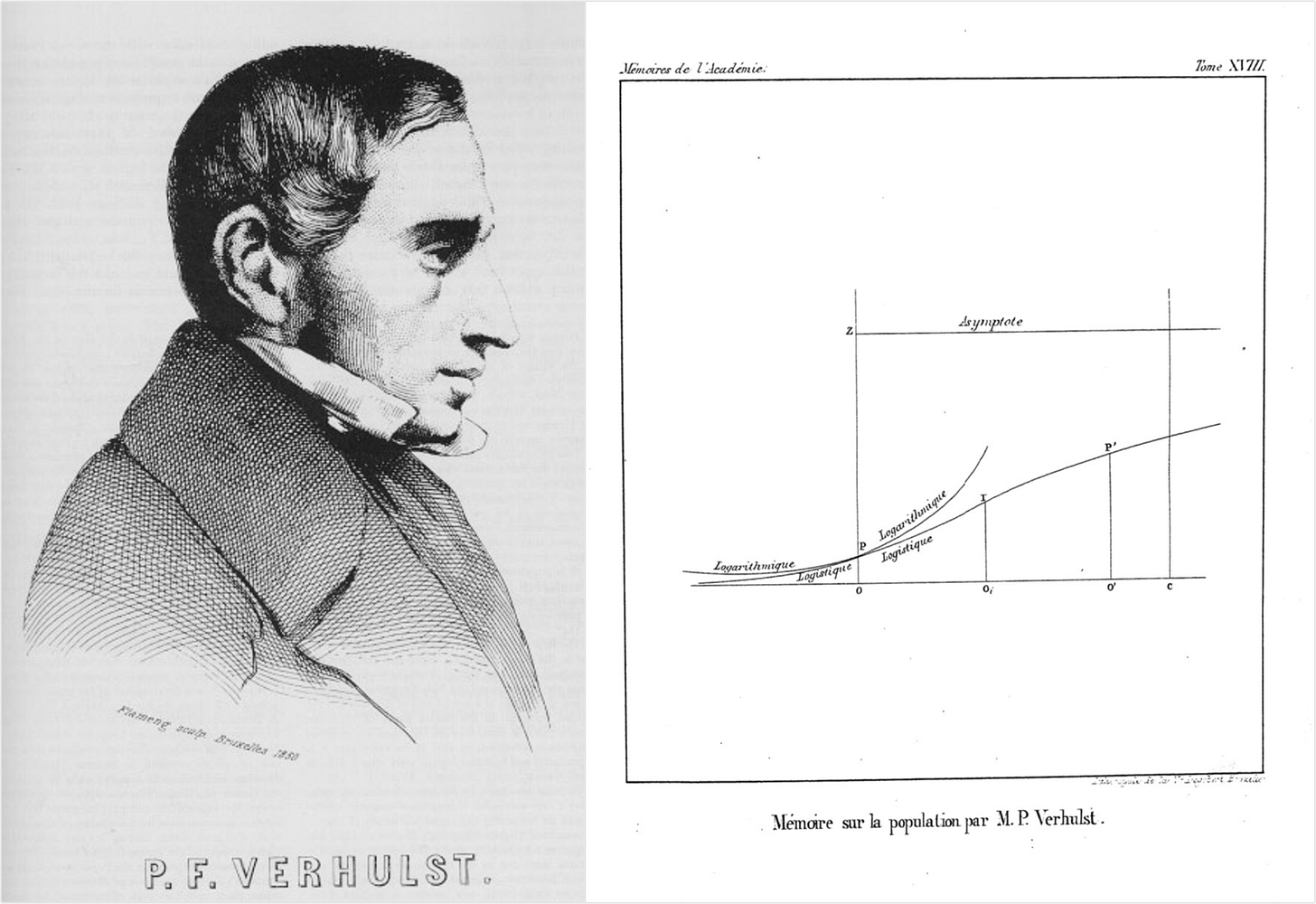Hello Interactors,
I spent this week listening to my favorite Rolling Stones songs and fretting over whether democratic infighting in Washington would end our best, and perhaps only, hope of climate change legislation. I can’t get no satisfaction and my sympathy for the devil is wearing thin. I hate to be the beast of burden, but can somebody gimme shelter?
As interactors, you’re special individuals self-selected to be a part of an evolutionary journey. You’re also members of an attentive community so I welcome your participation.
Please leave your comments below or email me directly.
Now let’s go…
MAINTAINING ORDER
The drummer for the Rolling Stones, Charlie Watts, passed away this week at 80 years old. The Stones have been around longer than I have and Charlie was their only drummer. He was never the flamboyant type, seeking drum solos or surrounding himself with racks of drums to satisfy some insatiable percussive proclivity. He just sat there in his suit doing his job – keeping rhythm for a singer who dances like he has ants in his pants.

Drummers never get the credit they deserve. They live in the shadows of vanity seeking vocalists and guitarists grasping for glamour. They’re always the brunt of sinister jokes about lacking the intelligence or talent to play a ‘real instrument’; so they’re stuck beating sticks on thin bouncy membranes stretched over cylindrical cannisters.
But having played in bands with no drummer, I can tell you it’s no fun. It’s hard to find drummers, and even harder to keep them. I wonder if Mick and the boys knew how good they had it? Keeping a beat is no easy feat. A good bass player helps, and while we’re all drawn to a pleasantly sounding harmony, it’s the lowly drummer who sets tone. Without a steady beat, music quickly unravels into a chaotic cacophonic calamity.
The world could use a drummer right about now. Nature, humans, society, and the climate have lost the beat. After decades of operating in regular 4/4 time, with occasional key changes or transitions to alternating rhythms, the universe has devolved into a seemingly extended random free-form improvisation. Pure chaos. How does this happen?

Learning new songs with a band hints at how it unravels. Humming along and feeling good about yourself, out of no where some band member misses a chord or drifts off beat. Everyone starts glancing around at each other in search of the culprit as you sense it getting worse. As the piano player and band leader, I’d sometimes start to pound my keys a little harder — emphasizing the beat in the process. Kind of like speaking louder and with a DIS-TINCT CA-DENCE TO SOME-ONE WHO DOES NOT SPEAK YOUR LANG-UAGE in hopes they’ll suddenly clue in.
But invariably another band mate would follow my lead and start playing louder to match my increasing volume. The next thing you know the drummer does too. It’s hard to play drums loud and slow, so the pace of the song quickens. Each change from one single individual results in corresponding feedback from other individuals in the group; that, in turn, induces more reactions from individuals – a dynamical system in a self-perpetuating feedback loop. Soon things evolve into a loud frenetic chaos. That’s when you understand how punk music was born.
Eventually everyone realizes that while playing fast, loose, and loud is fun for awhile it’s also exhausting and futile. Especially when learning songs like the sanguine but melancholy jazz standard, My Funny Valentine. We managed to learn enough songs to be hired for a wedding once, but we’d joke that music critics probably would have slotted us somewhere between jazz, R&B, and comedy.
Many classic jazz standards start out steadily predictable, but then cascade into chaotic frenzied solos that pass from one instrument to the other. I suspect even the subdued Charlie Watts took his turn soloing in his early days as a jazz drummer. Another standard of jazz standards is to collectively return to the steady state of the song’s uniform pattern played in unison — restoring order after the disturbance.
Many jazz conventions are rooted in the 12-bar Blues. Blues is recognized as blues, and jazz as jazz, because there are strict underlying rules governing the controlled creative chaos of soundwaves emanating from instruments and vocal chords. The Rolling Stones knew as much. That’s why Mick Jagger described their work on the 1972 album, Exile on Main St., as "runaway outlaws using the blues as its weapon against the world.” That album took the world by storm and is the highest ranking Stones album on Rolling Stone magazine’s list of the 500 Greatest Albums of All Time. That’s one storm nobody could have predicted.
THE STRANGE ATTRACTOR
That same year, 1972, MIT mathematician and meteorologist, Edward Lorenz, published a paper on the challenges of predicting storms titled, Predictability: Does the Flap of a Butterfly's Wings in Brazil Set Off a Tornado in Texas? His paper was the first to describe chaos theory. And the premise of his paper’s title has been shortened to what we now call the Butterfly Effect. Poetically, a certain set of values in an equation that exhibits a concept central to chaos theory called a strange attractor yields a plot that resembles a butterfly.

While studying mathematical models of weather systems, he discovered one small change in these dynamical systems could result in disproportionate and unforeseen effects. It was a major discovery. Chaos theory is believed by some to rank up there with the theory of relativity and quantum mechanics as three of the biggest scientific revolutions of the 20th century.
His research showed prediction of dynamical systems is dependent on an initial condition. He posited the gentle small flap of a butterfly’s wings could be an initial condition that could lead to a massively destructive typhoon on the other side of the globe. That’s not to say weather systems actually work this way, but his point was no meteorologist can accurately predict the weather without first knowing the initial condition of the weather system.
When our band would spiral into chaos, it was the result of some initial event; a band member playing too slowly or quickly, off melody, out of tune, or a myriad of other mitigating circumstances. It could have even been the locally brewed Hefeweizen we were drinking or the spicy green curry we sometimes ate before practice at the hole-in-the-wall Thai place down the street.
Dynamical systems are complex systems that change over time and are fundamental to chaos theory; weather systems are just one example. We are surrounded by dynamical systems. Our own bodies are dynamical. Ecosystems, societies, companies, local, state, provincial and national governments, continental regions, and global institutions all exhibit elements of dynamical systems.
And like members of a band playing from the same sheet music, they don’t stand on their own in isolation, but instead are connected and bonded through mutual interactions. They influence each other and are in-turn influenced. But complex systems are also self-healing systems. If a single component is removed, the system can carry on. Just as many bands do when they lose a drummer.
People who study complex dynamical systems, like Lorenz did, use mathematical models – equations that represent a simplified model of real phenomena – to simulate the behavior of these systems. One such model is called a logistic model.
Not to be confused with military or freight logistics, this word was offered by the Belgian mathematician, Pierre François Verhulst in 1845. He presumably chose the word logistic to both contrast and relate it with the more well known term logarithmic which he used to describe a curve that today we’d call an exponential curve – a curve that shows a greater increase in growth over time.

A logistic curve appears ‘log-like’ or ‘log-ish’ in its appearance because it starts out looking like an exponential curve but then flattens out over time. Some believe Verhulst merged log with istic the same way we merge simple with istic to form the word simplistic, hence the word logistic.1 But by now some of you are thinking, “Brad, nothing about this is simplistic and the growth of my confusion is growing exponentially over time. At what point does my confusion level out and become more logistic?” Not yet, I’m afraid.
Logistic models can be used to simulate population growth, just as Verhulst was when he discovered it. Human populations around the world are growing exponentially and aren’t expected to level off until 2050 or 2060. Non-linear population growth is hard to fathom. The only compound growth we seem to relate to are our savings accounts. But with disappointingly low interest rates, even those are hard to imagine growing.
There’s also the issue of carrying capacity in studying population growth. Limited space and resources impact growth rates. So do viral diseases like COVID-19 – a deadly nonlinear dynamical system that is so dumbfounding that even the most reasoned people refuse to take steps to stunt its growth.
Epidemiologists, biologists, demographers, pathologists, economists, and climatologists all use mathematical models, and other elements of chaos theory and complexity science, to find patterns amidst what appears to be random disturbances within these dynamical systems.
In the 1980s two scientists expanded on the work of Lorenz’s logistic model. Lord Robert May, a theoretical biologist, and Mitchell Feigenbaum, a theoretical physicist, discovered a way to map variables of the logistic model to create a simple equation that when iterated over time can predictably display chaos. It was a discovery that displaced Newton’s idea that the universe operates like clockwork in an infinitely predictable fashion.
A universe that ends in chaos sounds scary. Learning that dynamical systems are mathematically proven to yield chaos makes good ole’ mother earth seem more like a tyrannical erratic witch. The work of the devil. But what May and Feigenbaum discovered, as did the French team of Pierre Collet and Charles Tresser a year later, is there is order to be found in the chaos.
They were able to mathematically determine the rate at which predictable patterns of disruption reorganize until the next point of disturbance. The time between these self-healing disturbances become shorter over time leading to what is called ‘the edge of chaos’ — the strange attractor. After which, predictability vanishes into chaos.

If I had a recording of our band spinning into chaos learning a new tune, I suspect I could probably predict when we were on the edge of chaos. But while we could all feel those moments of disturbance that returned to a steady state, and even the edge of chaos, there is no way we could have predicted them in the moment. Given the frequency of climate calamities, it sure feels like we’re approaching the edge of chaos, even if we can’t predict when.
THE TIPPING POINT
The abrupt change that occurs after the edge of chaos can sometimes be called a tipping point. The Paris Agreement includes a series of legally binding pledges various countries have taken to avoid a climatic tipping point. The Intergovernmental Panel on Climate Change (IPCC), refer to the tipping point like this:
“An abrupt change is defined in this report as a change that takes place substantially faster than the rate of change in the recent history of the affected component of a system. In some cases, abrupt change occurs because the system state actually becomes unstable, such that the subsequent rate of change is independent of the forcing. We refer to this class of abrupt change as a tipping point, defined as a critical threshold beyond which a system reorganizes, often abruptly and/or irreversibly.”
When you hear reports like this of researchers using models to predict the effects of climate change, many of them are using these same techniques. Building models that more accurately simulate the real world offers better predictions of how long we have between periods of self-stabilization on a potential path to chaos.
The good news is improvements in large scale computing power enables nests of multi-variate differential equations to be calculated faster than ever. But some argue the divergence from the historical norm is often so great, that using the past to predict the future may be futile.
This graph of the recent Tennessee flood shows the time it took to achieve record flood levels over the last 1000 years. These record rainfalls were measured over a two day period. This area of the state reached a ‘once in a thousand years’ flood of 13 inches in just eight hours. By the end of the second day of measuring, it had peaked at a new record high of 17 inches.

We’re in a race between using mathematical models that leverage events of the past to understanding what’s happening to us now, and perhaps the future edge of chaos. But current events are nothing like we find in the past. This makes it all the more necessary and urgent to turn the Paris pledges into American action.
Step one is to pass the budget reconciliation bill the Democrats were hashing out this week. It includes most of President Joe Biden’s domestic agenda, including the recent bipartisan infrastructure package out of the Senate. We may have lost Charlie Watts, but our elected officials have a chance to get the beat back. This package includes what is needed for us to meet our end of the Paris Agreement and hopefully return to some kind of climatic stability. If not, we face the edge of climatic chaos – the tipping point.
Future generations will look back at this week and either credit us with being sinners or saints. I’m reminded of a Rolling Stones tune Mick Jagger and Keith Richards wrote off of the 1968 album, Beggars Banquet. It’s a song I sang with my buddies one summer nearly a decade after its release called Sympathy for the Devil. Mick sings in the first person as the devil; a metaphor for the historical devilish British behavior as he chronicles throughout the song. But, the mention of the Kennedy’s reveals the sentiment extends overseas to the Yanks as well.
The first verse introduces the devil embodied as a stereotypical Christian colonial capitalist. The final verse exits with a vision of a hellish wasteland of chaos the devil is willing to inflict if we don’t do some serious reflecting, repenting, restraining, and repairing. We need to restore the natural earthly rhythms, or else. It goes like this:
Please allow me to introduce myself
I'm a man of wealth and taste
I've been around for a long, long year
Stole many a man's soul and faith
I was 'round when Jesus Christ
Had his moment of doubt and pain
Made damn sure that Pilate
Washed his hands and sealed his fate
Just as every cop is a criminal
And all the sinners saints
As heads is tails, just call me Lucifer
'Cause I'm in need of some restraint
So if you meet me, have some courtesy
Have some sympathy, and some taste
Use all your well-learned politesse
Or I'll lay your soul to waste
Shulman, Bonnie (1998). "Math-alive! using original sources to teach mathematics in social context". PRIMUS. 8(March): 1–14. doi:10.1080/10511979808965879















Share this post